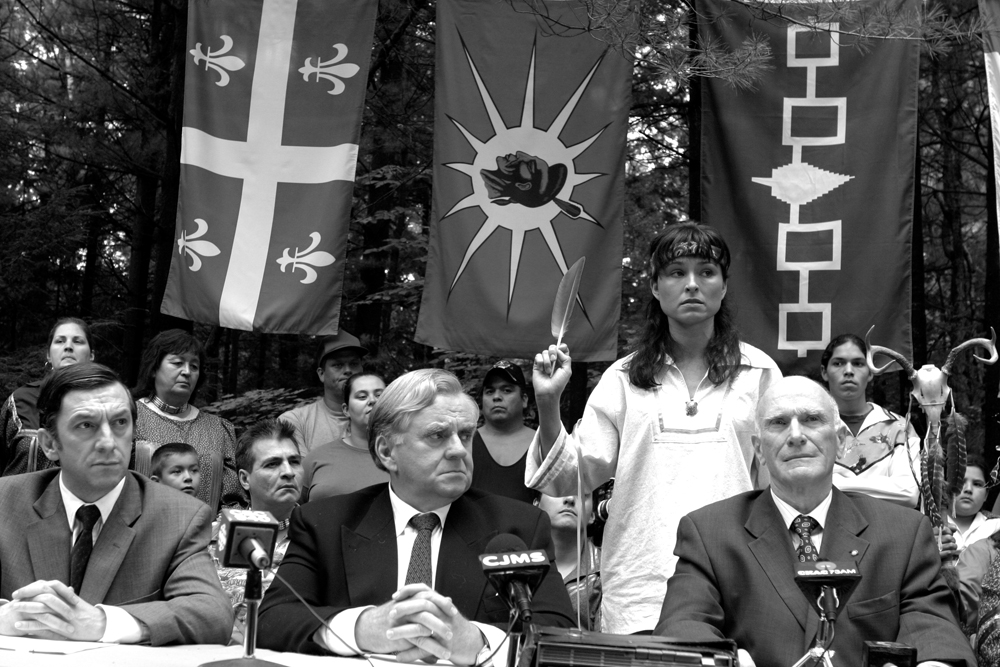
Sixteen years ago, Quebec and Canada as a whole, learned a tough lesson on Native affairs and the ever-present land issue.
In 1990, a peaceful protest in Kanesatake to protect sacred Native land, turned into a botched Surete de Quebec raid and left one SQ officer dead; all in the name of expanding a golf course.
The mini series film, Indian Summer: The Oka Crisis, succeeds on many levels, capturing of the essence of that time and the growing tension behind the lines.
It opens in the late 1800s with police hauling off a couple of local Kanesatake men to jail for cutting down trees on their own land to heat their homes and sell for food. The Sulpician priests gave the order and at that time, they were the ones in charge of many aspects of life in Kanesatake.
Throughout the story a single man, who appears as a ghost, stands with his brothers in the fight for the same pine forest he was jailed for in the opening scene for cutting down the trees. He appears as an ominous figure and is an effective means of illustrating the struggle Native people have had with the Catholic Church throughout the years.
The character building is also well done, as this reporter personally knows the main players in Kanesatake. They are
pretty much bang on.
Most people are familiar with the story, but for those who aren’t, you should check it out when you get the chance. It’s not only a Mohawk story; it is a piece of Canadian history on the big screen.
A touching moment during the question and answer period was when first-time actor Joseph Cross, the brother of the late Ronald Lasagna Cross, spoke about how he got the role as one of the more famous warriors of the crisis – his brother.
“I was in the (drug and alcohol) treatment centre when I heard about the auditions,” said Cross.
“I thought that it would be too late for me to audition by the time I got out. One day I was sitting by the water and a butterfly flew around me. I kept staring at it and put my hand out. It landed in my hand and stayed there for a few minutes. I touched it. Then it flew away. It came back awhile later and landed on my hand again. That’s when I thought of the similarities between us. Here was a beautiful butterfly that became that way from a lowly caterpillar. And now he was free to go wherever he wanted but he landed on my hand. I thought, ‘That’s kind of like me.’ That’s when I knew I would get out in time to try for the part and I got it.”
A recent screening played to a half-empty Kateri Hall in Kahnawake, but the energy was enough to fill the whole room. Many people went up to the microphone to comment on the film and there weren’t very many dry eyes in the house.
Indian Summer also showcased something people rarely got a chance to see; the back-door deals within the government and how provincial Indian Affairs Minister John Ciaccia made an attempt at nipping the crisis in the bud by asking his federal Indian Affairs counterpart Tom Siddon to purchase the land and hand it over to the Mohawks, at a cost of $2 million. Siddon balked and the Oka crisis ended up costing both governments more than 30 times that amount.
There were key moments that the movie, which included news clips from the crisis, failed to address. One was the confrontation between Lasagna and Corporal Patrick Cloutier. The two of them standing face to face, warrior against soldier, was a moment shown around the world and encapsulated the Mohawks’ 500 years of oppression and bad blood with the Crown.

